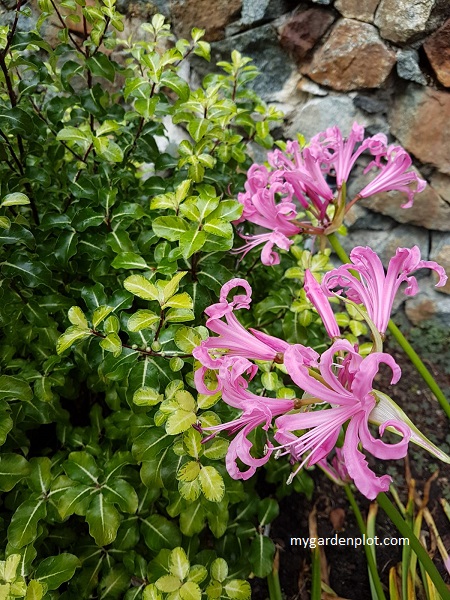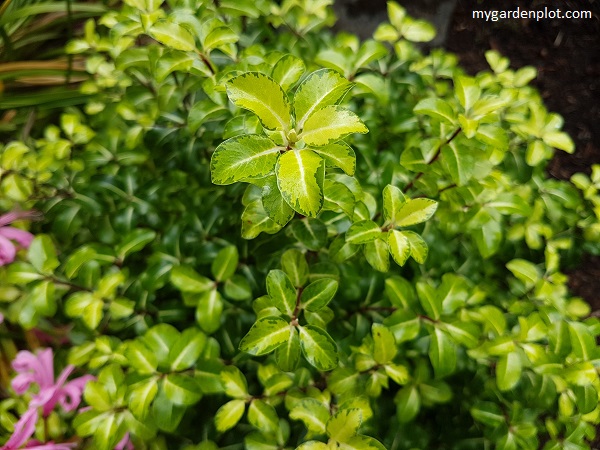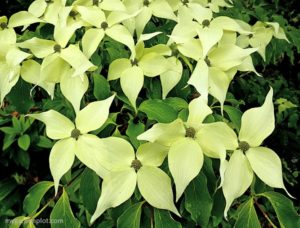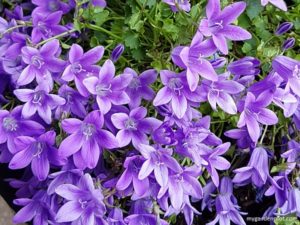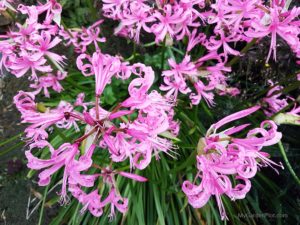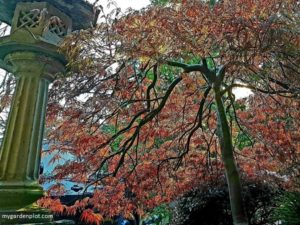About Pittosporum
Pittosporum is sometimes referred to as Kohuhu. It is an adaptable evergreen shrub or tree species native to Australia, New Zealand, and Japan. There are over 100 varieties. Though the Pittosporum is only suitable for zones 8 through 11, planted in the right location, they are easy to grow and enjoyed for a long time in the garden. Pittosporum tenuifolium is excellent for winter beds adding seasonal interest. More information and a Pittosporum growing guide below. The hardiest are P. anomalum, P. crassifolium, P. dallii and, in particular, the popular P. tenuifolium. The P. eugenioides and P. tobira are better suited for warmer regions or grown in a conservatory or greenhouse. Below find information on where to plant and how to grow Pittosporum tenuifolium. In particular, how to care for the P. tenuifolium ‘Gold Star,’ ‘Golf Ball’ and ‘Tom Thumb’ shrubs.
Generally, most Pittosporums tenuifolium varieties are suitable for Pacific Northwest coastal gardens and benefit from being planted in a sheltered site. Some can grow to 10 metres (30 feet) tall. Dwarf or smaller varieties can also be used in container gardening. Though grown for its evergreen foliage, it does produce tiny flowers in spring, various varieties of which are fragrant. Some P. tenuifolium varieties can also be used for topiary. Following are recommended Pittosporum for your garden whether for spring, summer, autumn or winter.
Pittosporum tenuifolium ‘Gold Star’
The Pittosporum tenuifolium ‘Gold Star’ shrub is one of my favourites. It is a tall and compact evergreen with beautiful variegated light green foliage and central yellow colour. The Gold Star leaves have a refreshing appeal, especially in the bleak of winter. It needs a well sheltered location, such as planted near an entrance wall in a south-facing garden bed. It can grow to 1.8 metres (6 feet) with a spread of about 90 cm (36 inches).
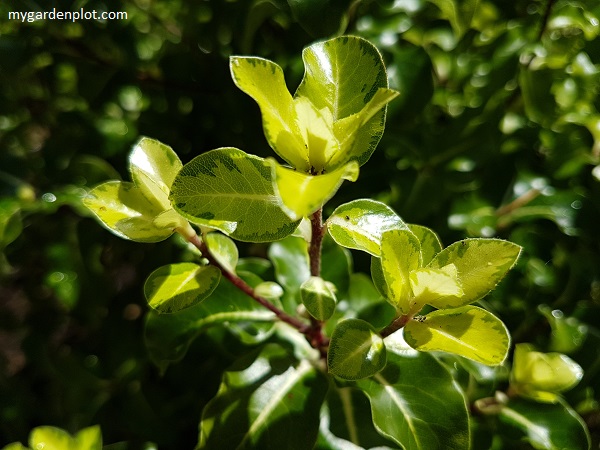
Pittosporum tenuifolium ‘Golf Ball’
The Pittosporum tenuifolium ‘Golf Ball’ is smaller than the ‘Gold Star’. As its name implies, the ‘Golf Ball’ has an attractive natural round growth habit. With some light pruning the Golf Ball can lend itself to a perfect round topiary sculpture. The Golf Ball is also suitable for container gardening. Its dark stems and light green foliage offer a contrast that looks incredibly handsome on its own planted in a pot at the entrance. It can grow to a height and equal spread of 1.2 metres (4 feet). The tiny brownish-purple flowers appear in spring.
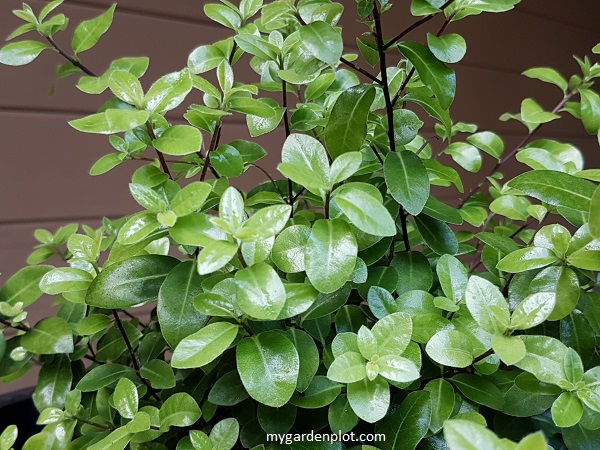
Pittosporum tenuifolium ‘Tom Thumb’
The hardy Pittosporum tenuifolium ‘Tom Thumb’ is rather unusual yet interesting with its dark purple foliage. The young leaves start green and later turn dark purple through winter. It is a small shrub reaching about 1 metre (3 feet) with a rounded growth habit. Great planted as a back drop in a perennial garden bed.
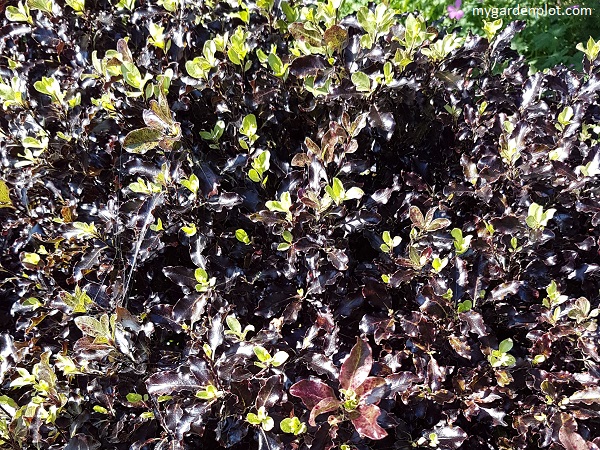
Pittosporum tenuifolium At A Glance
Type: Evergreen Shrub or Small Tree
Location: Full Sun (South or West-facing) – can tolerate some shade
Seasonal Interest: Year-Round
When To Prune: If Required, Trim Late Spring (see details below)
Size: Varies from 1.2 metres (4 feet) to 1.8 metres (6 feet) – some varieties can grow to 10 metres (30 feet) tall
Plant Hardiness Zones: 8 – 11
Where To Plant And How To Care For Pittosporum tenuifolium
The Pittosporum tenuifolium ‘Gold Star’, ‘Golf Ball’ and ‘Tom Thumb’ are low maintenance shrubs. In zones 8 or 9, plant in a sheltered site protected from winds, for instance near a wall. It prefers a sunny location. They can tolerate a semi-shady site and most soil types but thrives in fertile, moist, well-drained soils. New plants should be planted in spring or autumn. Add bone meal when planting it to help it establish. Water deeply and keep moist for its first year or if planted in a container.
For winter protection and to protect from frost, add dry mulch around the soil level to shield the base from extreme cold fluctuations. If heavy snow is expected, a plant cover can save any bent and mishapened stems. If planted in a container, move to a sheltered location such as under the overhang of the roof. This location during a wet winter will provide shelter from becoming waterlogged in the container.
RELATED TOPIC: Buyer’s Guide On How To Choose Hand Pruners (Secateurs)
RELATED TOPIC: Buyer’s Guide On How To Choose A Pruning Saw
Pests And Diseases Affecting Pittosporum tenuifolium
Pittosporum shrubs are generally trouble-free, though aphids can occasionally affect them. It is also usually deer resistant. However, if deer are hungry, they will take a nibble of the younger leaves. If you have lots of deer in the area, spray some deer repellent every now and then. I find it helps remind them to keep clear.
